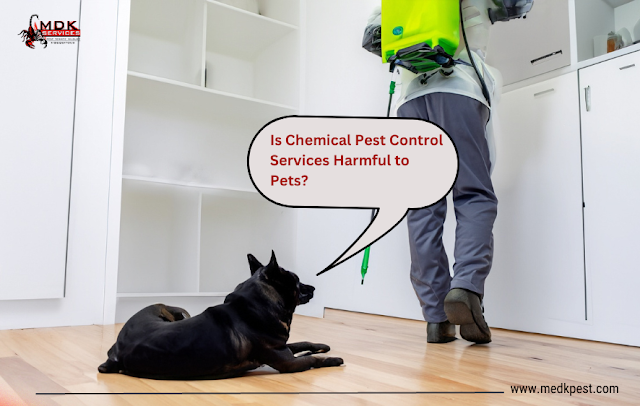Pest control plays a crucial role in maintaining a healthy and comfortable living environment, protecting us from the dangers and inconveniences caused by pests. However, if you're a pet owner, you might be concerned about the potential risks that pest control methods pose to your furry friends.
Pest control refers to the management and eradication of unwanted pests, such as insects, rodents, and other creatures, from residential, commercial, or agricultural spaces. It is essential for safeguarding human health, preventing property damage, and maintaining hygienic conditions.
Types of Pest Control Methods
There are various methods for managing pests, each employing its own array of techniques and strategies:
- Chemical Pest Control
- Biological Pest Control
- Physical Pest Control
- Cultural Pest Control
In this article, we're going to dive into the most commonly used methods for dealing with pests. i.e.
Chemical Pest Control
Chemical pest control involves the use of pesticides or insecticides to eliminate pests. These chemicals are designed to disrupt the pests' biological functions or cause direct harm. They can be effective in eradicating infestations quickly.
How chemical pest control works?
Chemical pesticides work by targeting the pests' nervous systems, metabolism, or reproductive capabilities. They come in various forms such as sprays, baits, and powders.
Pest Identification: The first step in chemical pest control is to identify the type of pest causing the problem. Different pests may require specific pesticides for effective control.
Selecting the Right Pesticide: Based on the identified pest and the severity of the infestation, a suitable pesticide is chosen. There are different types of pesticides, each designed to target specific pests or groups of pests.
Application: The selected pesticide is applied to the infested area. The application method can vary depending on the type of pesticide and the target pest. Common application methods include spraying, dusting, baiting, or fumigating.
Mode of Action: Pesticides work through different modes of action. Insecticides, for example, may interfere with the nervous system of insects, disrupt their growth or development, or affect their ability to reproduce. Herbicides target specific biochemical processes in plants, leading to their death. Fungicides may inhibit fungal growth or destroy fungal cells.
Common chemicals used in pest control
Some commonly used chemical pesticides include pyrethroids, organophosphates, and carbamates. These substances are formulated to kill or repel pests effectively.
Potential risks and precautions for pets
While chemical pest control methods can be highly effective, they may pose risks to pets if not used carefully. It is crucial to follow the instructions provided by the manufacturer and consider pet safety during application.
Potential Risks of Pest Control for Pets
While pest control is necessary, it is important to be aware of the potential risks it may pose to pets. These risks can be categorized into direct and indirect exposures to pesticides. The health risk of pets can increase by pesticides, they cause adverse health effects in pets, ranging from skin irritations to respiratory problems and even more severe conditions in some cases. If your pet has been affected by pesticides then watch out for symptoms like vomiting, diarrhea, difficulty to breathing, excessive drooling, or seizures. Seek immediate veterinary care if you suspect pesticide poisoning.
In another case, your pet has been affected by other pets, such as contaminated pets or contact with chemical-treated surfaces. Pets can unknowingly bring pesticides into their living spaces through their paws or fur after walking on treated areas. They may then ingest these chemicals while grooming themselves.
Precautions to Ensure Pet Safety During Pest Control Service
To minimize the risk of pest control service treatment for your pets, it is essential to inform the pest control company about your pet’s presence in your home so that they can take necessary precautions during the application. For better precautions, you should relocate your pets temporarily to a safe environment until the treatment is finished.
Conclusion
Pest control is essential for maintaining a healthy and pest-free living environment. While some pest control methods can pose risks to pets, there are precautions you can take to ensure their safety. By understanding the different pest control methods, communicating with professionals, and exploring pet-friendly alternatives, you can effectively manage pests without compromising your pets' well-being.
In today's fast-paced world, nobody has the time to handle pest control at home by themselves. It's also a hassle to remember all the necessary chemicals, gather them individually, and follow all the precautionary steps. It becomes even more overwhelming to recall everything during the application process. To avoid this situation, hire a professional pest control company like MDK Services, which offers top-notch pest control services in Texas. With their team of skilled pest control technicians, they can handle everything from indoor to outdoor treatments, ensuring the well-being of your pets as well. So, why you are waiting for? Give us a call at +1 325-658-3498.













0 coment�rios: